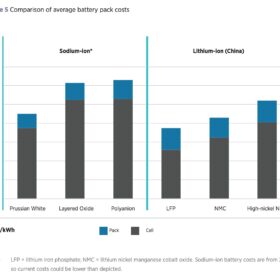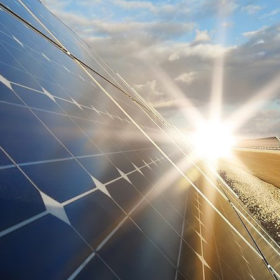As India is moving towards becoming a developed country and meeting its sustainability goals to emerge as a world leader, it stands at a crossroads of economic growth and environmentally conscious development while also pushing for building domestic strength to reduce import reliance. In such a dilemma, its startup ecosystem is working day and night to advance its ambitions, especially in the landscape of clean energy.
Driven by the purpose of improving the quality of living without compromising biodiversity and the overall health of the ecosystem, energy solution startups are spearheading a sustainable future through eco-friendly battery solutions that are also accessible and economical.
Driving Battery Storage for Renewable Energy
India’s adoption of clean energy hinges upon battery solutions that can provide energy in periods of lulls, as the intermittent nature of renewable energy resources can make the electricity grid unstable. While a large portion of batteries is imported, Indian start-ups are starting to recognise that widespread adoption necessitates affordability, which in turn demands large-scale production in domestic units.
Startups are expanding their production capacities to reduce the cost of production per unit in order to add affordability in the renewable energy industry. This is essential, as reliance on imported battery cells not only increases the upfront cost of projects but also makes access to customer support and technical assistance harder or impossible.
Pioneering “Second-Life” Business Models
The main battery storage technology used in India comprises lithium-ion batteries. With lithium being an imported raw material, recycling and repurposing of lithium batteries once they have completed their lifecycle is paramount. In line with this, Indian startups have come up with several ingenious business models for second-life applications that repurpose EV or lithium-ion batteries for stationary storage that maximise the return on investment, reduce waste and carbon footprint, decrease the cost of energy storage and electric vehicles and enable a circular economy. The second-life applications include powering streetlights, portable solar-powered torches, CCTV cameras, and many more everyday technologies.
To execute this on a mass scale, startups set up channels of battery collection from their customers after 5 to 10 years, when a battery has degraded by 70-80% and is no longer adept at powering an EV. Such batteries are, however, qualified to be used for stationary storage until their capacity degrades by approximately 30%, after which they are sent to recycling facilities for the extraction of raw materials. This reduces imports and fosters a self-sustaining model by preserving resources.
Chemical Engineering for India-Specific Solutions
India has a rocky terrain in most states. Thus, for electric vehicles to survive, the batteries must be resilient, durable, dustproof and shock-resistant. This implies heavy and large battery solutions will only be a cost liability for customers. Indian startups had long realised this issue with foreign solutions, and after much investment in research and development, through excellence in chemical engineering, they are providing high-density batteries that are compact in size. These batteries are not only light in weight and less vulnerable to India’s crude road conditions but also can withstand temperature extremes while ensuring long battery life to counter the lack of charging points for EVs.
The Future Vision: Innovation and Protection of National Energy Sovereignty
Localised production of batteries presents protection against geopolitical tensions like the sudden imposition of tariffs or war breakouts. Thus, the energy solution startup ecosystem is far beyond business profit-making, extending its roots into nation-building and worldwide environmental conservation. With a strong commitment to innovation, quality and service, the Indian energy solution startups are at the forefront of ensuring India’s adoption of Electric vehicles and Solar panels remains reliable and efficient while maintaining the highest standards of quality and performance. Most importantly, as they echo the ethos of Make in India, they also boast of affordability.
The views and opinions expressed in this article are the author’s own, and do not necessarily reflect those held by pv magazine.
This content is protected by copyright and may not be reused. If you want to cooperate with us and would like to reuse some of our content, please contact: editors@pv-magazine.com.








By submitting this form you agree to pv magazine using your data for the purposes of publishing your comment.
Your personal data will only be disclosed or otherwise transmitted to third parties for the purposes of spam filtering or if this is necessary for technical maintenance of the website. Any other transfer to third parties will not take place unless this is justified on the basis of applicable data protection regulations or if pv magazine is legally obliged to do so.
You may revoke this consent at any time with effect for the future, in which case your personal data will be deleted immediately. Otherwise, your data will be deleted if pv magazine has processed your request or the purpose of data storage is fulfilled.
Further information on data privacy can be found in our Data Protection Policy.